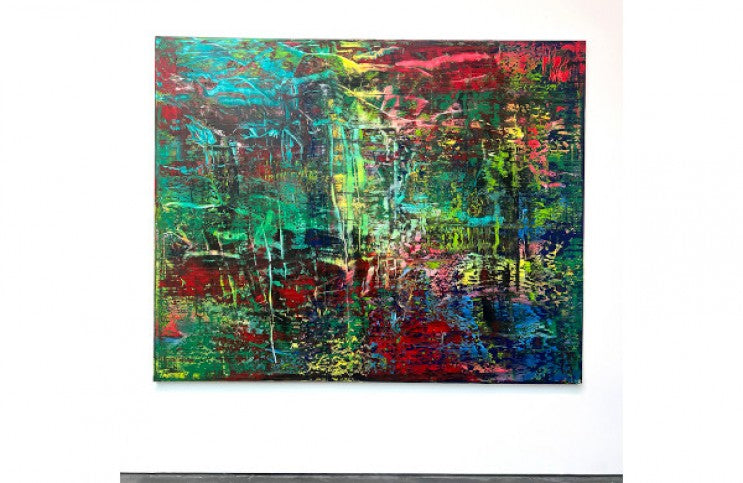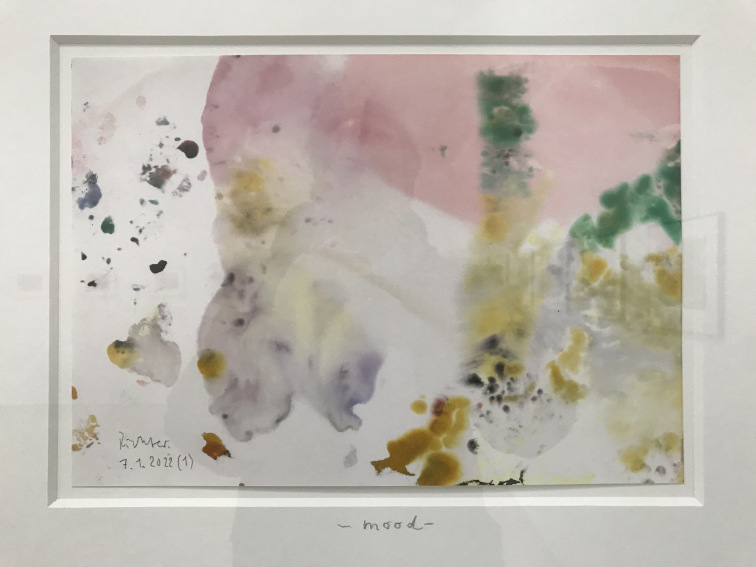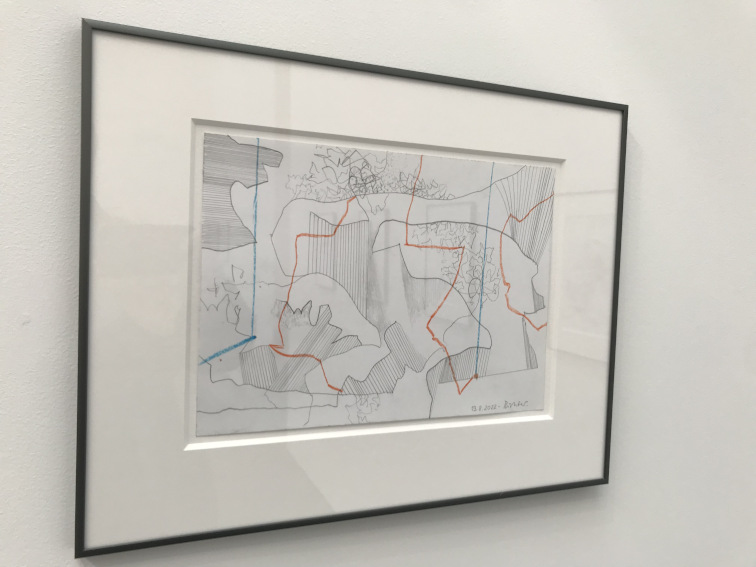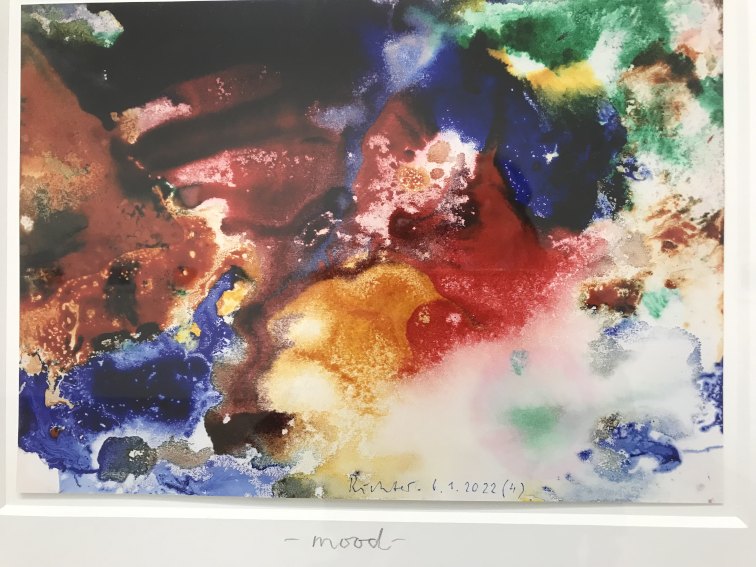
From Painting to Drawing: Richter's Creative Evolution in the Pandemic Era
A buzz percolates around a recent exhibition in New York claiming Gerhard Richter completed his last paintings between 2016 and 2017. Since 2017, the legend of his own brand of abstraction and unique process has been focusing on drawing, printing and sculpture. Does a legend just stop painting, or is he taking a pause at 91 years old to return to drawing where exploration becomes the playground of invention? Perhaps this new collection of pencil and ink drawings, as well as small “mood” ink drawings on paper suggest liberation from a painting practice that defined him as contemporary abstract royalty. Richter leaves behind a legacy and an extreme hierarchical standard for emerging abstract artists.
With his early career blurred photographic paintings as a foundation, Richter is most known for his abstract oeuvre from 2000-2017. The declaration of the last of this Abstrakte Bilder (Abstract Paintings) series implies very valuable, not only to the current art market but this work will define 21st-century abstract painting in the same way that Pollock defines Abstract Expressionism. Both discovered master-level painting without a brush. They were pushing the boundaries of painting among contemporary abstract artists like Mark Bradford, Trudy Benson, Sam Gilliam, Frank Bowling and Agnes Martin. Richter was quoted in The New York Times article An Artist Beyond Isms (2002) by Michael Kimmelman, “By nature, I am a skeptic. I don’t dare to think my paintings are great. I can’t understand the arrogance of someone saying, ‘I have created a big, important work.’ I want to reject this pathetic behavior, this notion of the heroic artist. Pollock, Barnett Newman, Franz Kline, their heroism derived from the climate of their time, but we do not have this climate... On the other hand, you do need feelings like they had to some extent. So I am afraid there must be a side of me close to those feelings. Those absurd feelings”.

Gerhard Richter at David Zwirner, 20th Street, New York, USA on 16 Mar–22 Apr 2023. Installation view.
The 2016-2017 paintings are all titled Abstraktes Bild (Abstract Painting) as if to document the importance of the series as an experiment. He found a cure for the usual. The color palettes seem mood based, some vibrate and some more demure with more dominant streaks of silencing neutral gray, white or brown. The “mood” ink drawings (2022) are the same but possess the blur he was known for prior to his 21st century Abstract Paintings. Paint flow is interrupted by staccato streaks like strange experimental breaks in a Thelonious Monk song. There is a poetic impulse to disrupt perfection. Layers of erasure, construction and deconstruction, and repetition of process are an equation with multiple outcomes. Although the preparation and action of the experiment are the same, each painting has its own unique character. Get close and you get lost in a labyrinth of organized chaos or another dimension. Somewhere between the disruption and the order is the revelation.

Gerhard Richter at David Zwirner, 20th Street, New York, USA on 16 Mar–22 Apr 2023. Installation view.
Richter’s pencil drawings from 2021-2022 are inventing a special realm of geometric lines and angles that float like the mystic mist they fail to control or contain. Curious is the existence of geometry coalescing with the expansiveness of a dreamy infinity. This work juxtaposes the rational and sensual sides of human nature. In these drawings, the two coexist and float in harmony with a reminiscent graceful tension found in the Abstraktes Bild series. There is beauty in the tension of relationships, a reminder that we thrive on balance. Richter in 'An Artist Beyond Isms’ (2002) said, “My works are not just rhetorical, except in the sense that all art is rhetorical. I believe in beauty”.
Compared to the pencil drawings, the ink drawings are more fluid like a Frankenthaler. The lines are more structural and anchor flowing ink, in some cases, resembling other-worldly entities. Richter is playing with abstraction with the minimal suggestion of space and possible subconscious figuration. Compared to the colorful “mood” ink drawings, the black ink drawings are fresh and unfamiliar, even mysterious. Richter explains the satisfaction in the search, “It is instinctive to search for something. Abstract art is inherently about the search - and about not finding anything”.

Gerhard Richter at David Zwirner, 20th Street, New York, USA on 16 Mar–22 Apr 2023. Installation view.
In 2020, with the onset of the pandemic, David Hockney began drawing and painting on an iPad. Instinctually, he went back to the therapeutic basics: nature and drawing. Many artists took the same type of pause. Richter’s shift to drawings in 2021-2022 was in sync with a collective creative conscience. Sensitive minds find ways to process and the less hard labor involved, the more precious time is allocated to thought, contemplation, reinvention and survival. Change brings transformation. In 2023, the world is seeing how artists worked during the pause....the silence....and the isolation.
Even Richter reacted the way we all did. It humanized him, made him feel accessible, like a wise teacher. He inspired and encouraged us with his childlike curiosity through difficult times. The art world conformed to accommodate change and the differences in lifestyle. Artists drive change and activism. An artist that rebels against their own practice is a free artist. In his early career Richter said, “I painted through the whole history of art toward abstraction. I painted like crazy [and] I had some success with all that, or gained some respect. But then I felt it wasn’t it, and so I burned the crap in some sort of action in the courtyard. And then I began. It was wonderful to make something and then destroy it. It was doing something and I felt very free.”
Featured image: Gerhard Richter at David Zwirner, 20th Street, New York, USA on 16 Mar–22 Apr 2023. Installation view.
All images used for illustrative purposes only
By Amanda Wall







